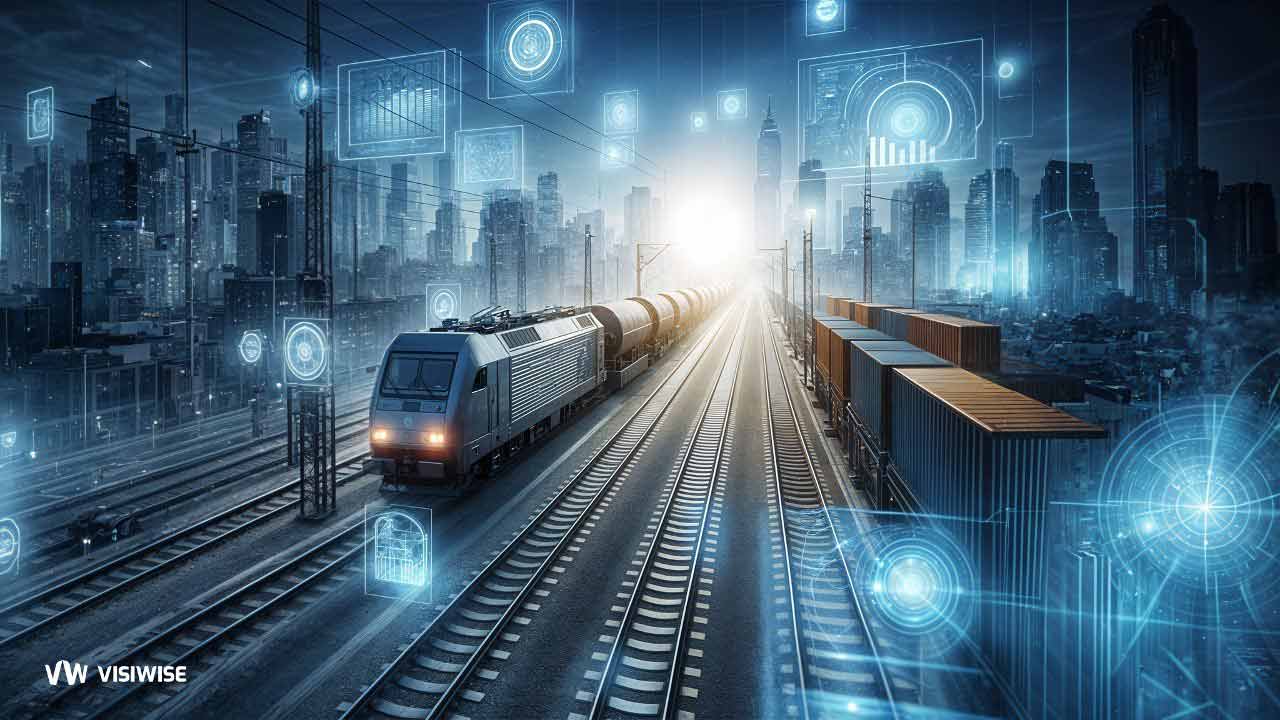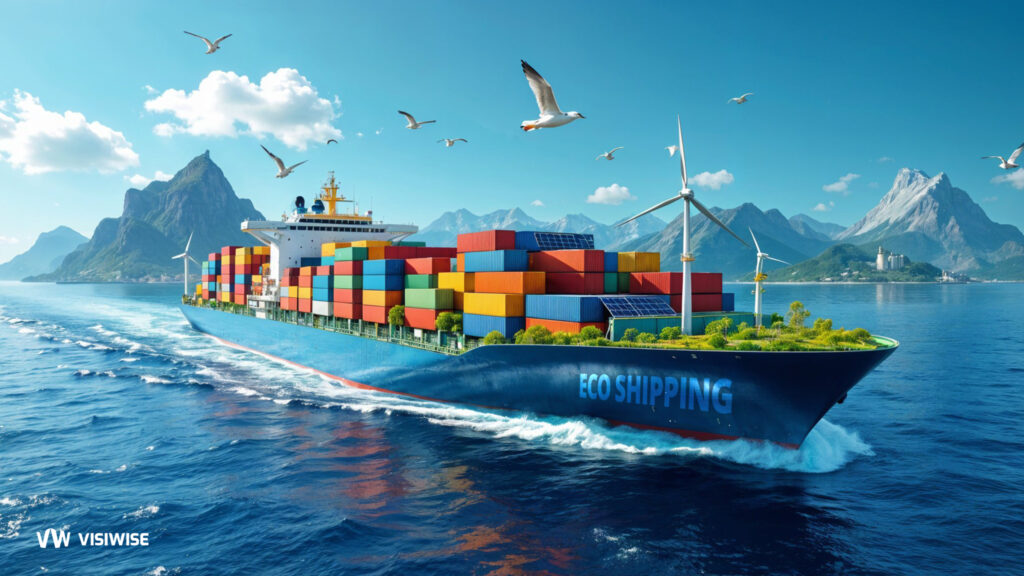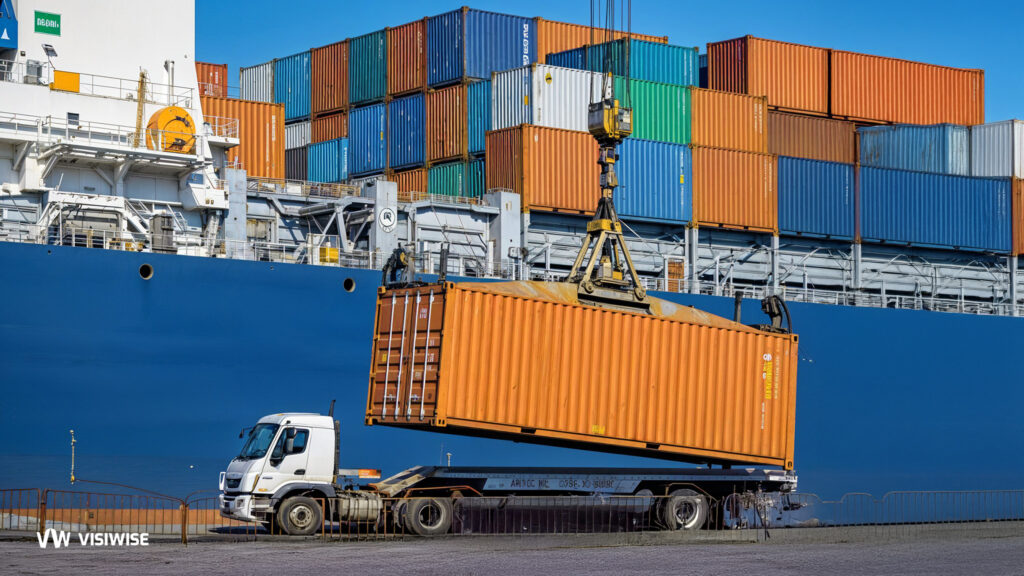The rail freight transportation industry has been a critical backbone of global trade for centuries. It offers a cost-effective, energy-efficient, and environmentally friendly mode of transporting goods over long distances. However, the traditional rail freight system has often been criticized for its lack of transparency and inefficiency in tracking shipments. Real-time visibility in rail freight transportation is emerging as a revolutionary solution to these challenges, leveraging modern technology to enhance efficiency, reliability, and customer satisfaction.
This article explores the concept of real-time visibility in rail freight transportation, its benefits, the technologies enabling it, challenges in implementation, and future trends.
Understanding Real-Time Visibility
Real-time visibility refers to the ability to track and monitor the movement of goods in real-time, providing up-to-the-minute information about their location, status, and condition. In the context of rail freight transportation, it involves using advanced technologies to monitor trains, cargo, and infrastructure, ensuring that all stakeholders have accurate and timely information.
Key Components of Real-Time Visibility
- Tracking Technology: Utilizing GPS, RFID, and IoT devices to monitor the location of trains and cargo.
- Data Analytics: Processing vast amounts of data to provide actionable insights and predictive analytics.
- Communication Systems: Ensuring seamless data transmission between trains, control centers, and customers.
- User Interfaces: Providing accessible and intuitive platforms for stakeholders to access real-time information.
Benefits of Real-Time Visibility in Rail Freight Transportation
1. Enhanced Operational Efficiency
Real-time visibility enables rail operators to optimize train schedules, reduce idle times, and improve route planning. By knowing the exact location and status of each train and cargo, operators can make informed decisions to enhance the efficiency of their operations.
2. Improved Customer Service
Customers demand transparency and timely updates on their shipments. Real-time visibility allows rail freight companies to provide accurate ETAs, notify customers of any delays, and offer proactive solutions. This level of service fosters trust and strengthens customer relationships.
3. Increased Safety and Security
Real-time monitoring of rail assets and cargo helps in identifying potential safety hazards and security threats. For instance, sensors can detect anomalies such as temperature fluctuations in perishable goods or unauthorized access to cargo containers, enabling prompt corrective actions.
4. Reduced Costs
Efficient operations and improved asset utilization directly contribute to cost savings. Real-time visibility helps in minimizing fuel consumption, reducing labor costs associated with manual tracking, and decreasing losses due to theft or damage.
5. Better Compliance and Reporting
Regulatory compliance is crucial in the rail freight industry. Real-time visibility systems can automate data collection and reporting, ensuring adherence to regulations and simplifying audits.
Technologies Enabling Real-Time Visibility
Several technologies are pivotal in achieving real-time visibility in rail freight transportation. These include:
1. Global Positioning System (GPS)
GPS technology provides precise location data for trains and cargo. By integrating GPS with advanced tracking systems, rail operators can monitor the movement of goods in real-time, ensuring accurate and reliable positioning information.
2. Internet of Things (IoT)
IoT devices, such as sensors and RFID tags, play a crucial role in real-time visibility. These devices collect data on various parameters, including temperature, humidity, vibration, and security status, and transmit this information to central monitoring systems.
3. Big Data Analytics
The vast amount of data generated by GPS and IoT devices needs to be processed and analyzed to derive meaningful insights. Big data analytics enables rail operators to predict delays, optimize routes, and enhance overall operational efficiency.
4. Cloud Computing
Cloud computing provides the infrastructure needed to store, process, and access real-time data from anywhere. It ensures that all stakeholders, including rail operators, customers, and regulatory bodies, can access up-to-date information through user-friendly interfaces.
5. Blockchain Technology
Blockchain can enhance transparency and security in rail freight transportation. By creating immutable records of transactions and cargo movements, blockchain ensures data integrity and reduces the risk of fraud and tampering.
6. Artificial Intelligence (AI)
AI algorithms can analyze historical and real-time data to predict potential issues, such as equipment failures or delays, and suggest optimal solutions. AI-driven automation also enhances decision-making processes, leading to improved operational efficiency.
Challenges in Implementing Real-Time Visibility
Despite the numerous benefits, implementing real-time visibility in rail freight transportation comes with its own set of challenges:
1. High Initial Costs
The deployment of advanced technologies such as IoT devices, GPS systems, and cloud infrastructure requires significant investment. Small and medium-sized rail operators may find it challenging to bear these costs.
2. Integration with Legacy Systems
Many rail operators still rely on outdated legacy systems. Integrating real-time visibility technologies with these systems can be complex and time-consuming, requiring specialized expertise.
3. Data Privacy and Security
Real-time visibility involves the collection and transmission of vast amounts of data. Ensuring the privacy and security of this data is crucial to prevent cyber threats and unauthorized access.
4. Standardization Issues
The rail freight industry lacks standardized protocols for data exchange and communication. This can lead to interoperability issues between different systems and stakeholders, hindering the seamless flow of information.
5. Resistance to Change
Implementing new technologies often faces resistance from employees and management accustomed to traditional methods. Overcoming this resistance requires comprehensive training and change management strategies.
Case Studies: Successful Implementation of Real-Time Visibility
Case Study 1: Union Pacific Railroad
Union Pacific Railroad, one of the largest freight rail networks in the United States, has successfully implemented real-time visibility solutions. By leveraging GPS tracking, IoT sensors, and advanced analytics, Union Pacific can monitor its vast network in real-time. This has resulted in improved operational efficiency, reduced delays, and enhanced customer satisfaction.
Case Study 2: Deutsche Bahn Cargo
Deutsche Bahn Cargo, a leading European rail freight company, has adopted real-time visibility technologies to streamline its operations. The company uses IoT devices to monitor the condition of cargo and predict maintenance needs. This proactive approach has significantly reduced downtime and maintenance costs.
Case Study 3: Indian Railways
Indian Railways has integrated real-time visibility solutions to improve the efficiency of its freight operations. By using GPS and RFID technology, Indian Railways can provide real-time updates to customers, optimize train schedules, and ensure timely delivery of goods. This initiative has boosted the competitiveness of rail freight in India.
Future Trends in Real-Time Visibility
1. Autonomous Trains
The development of autonomous trains is set to revolutionize rail freight transportation. Equipped with advanced sensors and AI, these trains can operate without human intervention, ensuring safer and more efficient operations. Real-time visibility will play a crucial role in monitoring and managing autonomous trains.
2. Enhanced Connectivity with 5G
The advent of 5G technology will provide faster and more reliable connectivity for real-time visibility solutions. This will enable the seamless transmission of large volumes of data, supporting advanced applications such as predictive maintenance and real-time video monitoring.
3. Integration with Multimodal Transportation
Real-time visibility will extend beyond rail freight to integrate with other modes of transportation, such as road, air, and sea. This multimodal visibility will provide end-to-end tracking and monitoring, ensuring seamless logistics operations.
4. Advanced Predictive Analytics
The future of real-time visibility lies in advanced predictive analytics. By harnessing the power of AI and machine learning, rail operators can predict and mitigate potential disruptions, optimize asset utilization, and enhance overall efficiency.
5. Sustainability Initiatives
Real-time visibility will support sustainability initiatives by enabling more efficient resource utilization and reducing carbon emissions. By optimizing routes and minimizing idle times, rail freight operators can contribute to a greener and more sustainable supply chain.
Common Commodities Delivered by Rail Transport
Rail transport has been a cornerstone of global logistics for over a century, providing an efficient and cost-effective means of moving large quantities of goods across vast distances. The versatility of railways makes them suitable for transporting a wide variety of commodities. Here, we explore some of the most common commodities delivered by rail, both domestically and internationally, highlighting their significance and the reasons why rail is often the preferred mode of transport for these goods.
1. Coal
Importance:
Coal is one of the primary commodities transported by rail, especially in countries like the United States, China, and Australia. It is a vital resource for electricity generation and steel production.
Reasons for Rail Transport:
- Volume: Coal is typically transported in large quantities, making rail the most economical mode of transport.
- Infrastructure: Many power plants and industrial facilities are located near rail lines, facilitating easy delivery.
- Efficiency: Rail offers a reliable and continuous supply chain for coal, which is essential for industries dependent on a steady flow of this commodity.
2. Automobiles and Automotive Parts
Importance:
The automotive industry relies heavily on rail transport for the delivery of finished vehicles and parts. Rail is used to move cars from manufacturing plants to distribution centers and dealerships.
Reasons for Rail Transport:
- Specialized Railcars: Auto racks, specially designed railcars, provide secure and efficient transport for vehicles.
- Cost-Effectiveness: Rail transport reduces shipping costs compared to other modes, particularly for long distances.
- Damage Reduction: Rail is less prone to the bumps and vibrations that can occur with road transport, reducing the risk of damage to vehicles and parts.
3. Grain and Agricultural Products
Importance:
Grain, including wheat, corn, and soybeans, is a staple of rail transport, especially in agricultural economies. Other agricultural products like fertilizer and animal feed are also commonly transported by rail.
Reasons for Rail Transport:
- Bulk Handling: Rail is ideal for transporting bulk commodities, allowing for the movement of large volumes in single shipments.
- Access to Ports: Rail networks often connect directly to major ports, facilitating the export of agricultural products.
- Seasonal Efficiency: During harvest seasons, railways provide the necessary capacity to move large quantities of grain quickly and efficiently.
4. Chemicals and Petrochemicals
Importance:
The chemical industry relies on rail transport for the movement of raw materials and finished products. This includes everything from fertilizers and industrial chemicals to plastics and resins.
Reasons for Rail Transport:
- Safety: Rail is considered a safer option for transporting hazardous materials compared to road transport.
- Regulatory Compliance: Rail transport complies with stringent regulations for the handling and movement of chemicals.
- Efficiency: Rail can handle large quantities of chemicals in specialized tank cars designed to prevent leaks and contamination.
5. Intermodal Containers
Importance:
Intermodal transport involves the movement of containers that can be transferred between different modes of transport, such as ships, trucks, and trains, without unloading the cargo.
Reasons for Rail Transport:
- Versatility: Rail intermodal services offer flexibility in moving containers to and from ports and inland destinations.
- Efficiency: Rail transport can handle large numbers of containers simultaneously, reducing transit times and costs.
- Environmental Benefits: Intermodal rail transport is more fuel-efficient and produces fewer emissions compared to road transport.
6. Forest Products
Importance:
Forest products such as lumber, pulp, and paper are frequently transported by rail. This is particularly important in regions with significant forestry industries, like Canada, Russia, and Scandinavia.
Reasons for Rail Transport:
- Bulk and Weight: Rail can efficiently handle the heavy and bulky nature of forest products.
- Cost Savings: Transporting large quantities over long distances is more cost-effective by rail.
- Direct Access: Many sawmills and paper mills are located near rail lines, facilitating direct loading and unloading.
7. Minerals and Ores
Importance:
The mining industry heavily depends on rail transport for the movement of minerals and ores, including iron ore, copper, and bauxite.
Reasons for Rail Transport:
- High Volume: Mining operations produce large quantities of raw materials that need to be transported in bulk.
- Infrastructure: Railways often connect directly to mines and processing plants, providing an efficient transport route.
- Durability: Railcars are designed to handle the rough and abrasive nature of ores and minerals.
8. Petroleum and Petroleum Products
Importance:
Rail transport is a critical component in the supply chain for petroleum and petroleum products, including crude oil, gasoline, and diesel.
Reasons for Rail Transport:
- Capacity: Rail can transport large volumes of liquid commodities efficiently.
- Flexibility: Rail provides an alternative to pipelines, especially in regions where pipeline infrastructure is limited or during periods of high demand.
- Safety and Regulation: Rail tank cars are designed to meet safety standards for the transportation of flammable liquids, ensuring regulatory compliance.
Final Thoughts
Real-time visibility in rail freight transportation is transforming the industry, offering numerous benefits such as enhanced operational efficiency, improved customer service, increased safety, and reduced costs. Enabled by advanced technologies like GPS, IoT, big data analytics, cloud computing, blockchain, and AI, real-time visibility provides accurate and timely information to all stakeholders.
Despite the challenges in implementation, successful case studies from leading rail freight companies demonstrate the potential of real-time visibility to revolutionize the industry. As technology continues to evolve, the future of real-time visibility promises even greater advancements, including autonomous trains, enhanced connectivity, multimodal integration, advanced predictive analytics, and sustainability initiatives.
By embracing real-time visibility, the rail freight transportation industry can overcome its traditional limitations and emerge as a more efficient, reliable, and customer-centric mode of transportation, driving global trade and economic growth.



